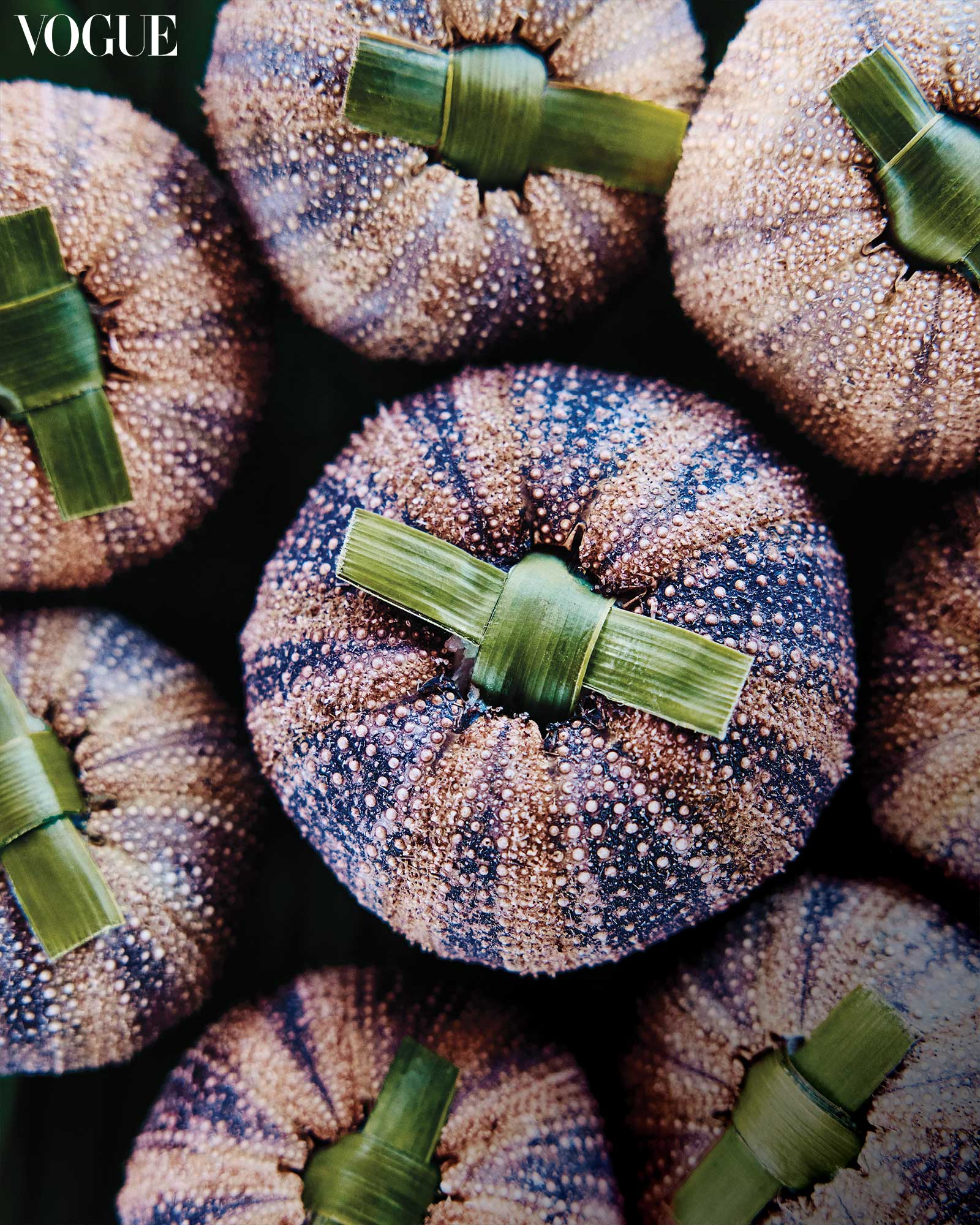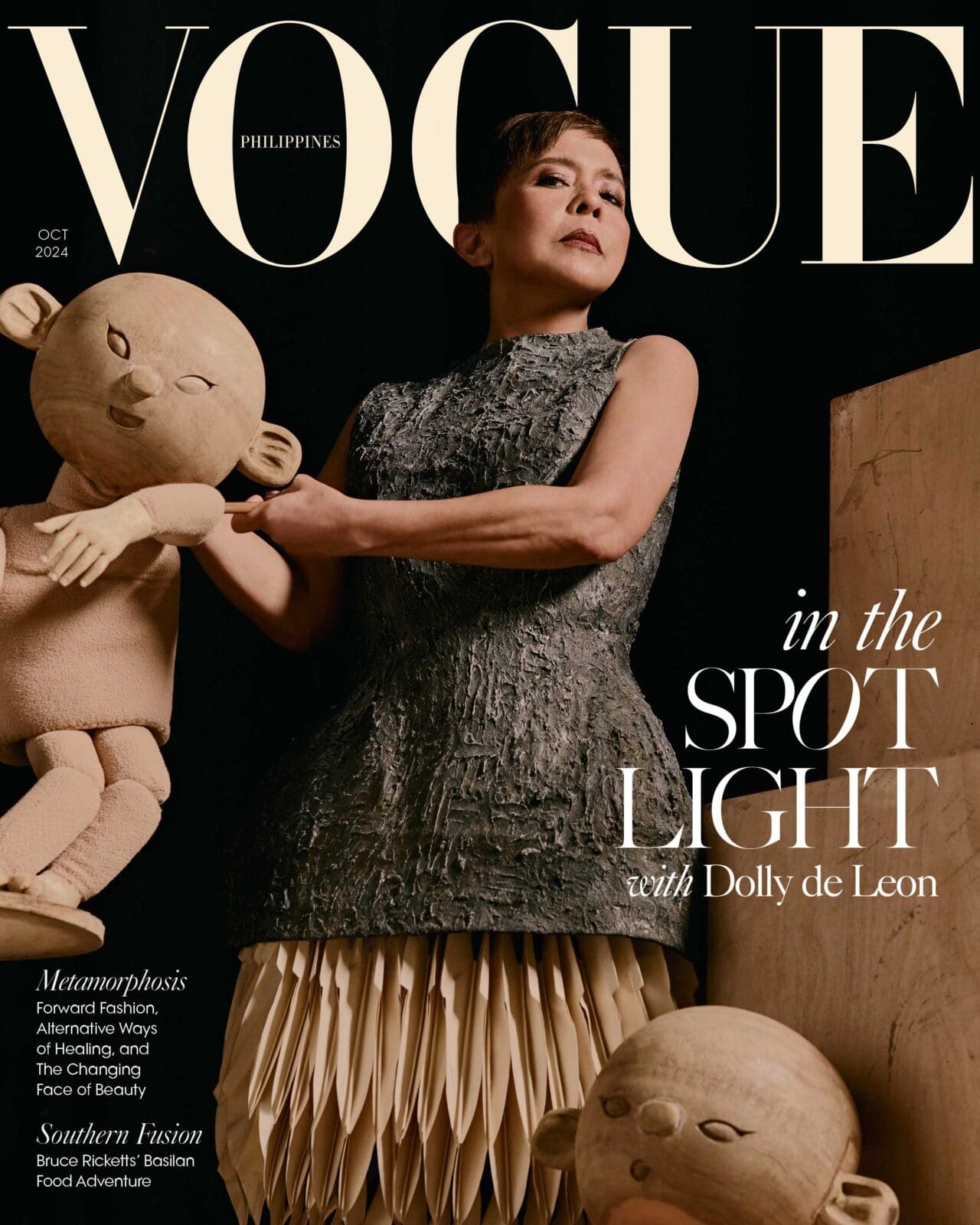Photographed by Gabriel Nivera for the October 2024 Issue of Vogue Philippines
Photographed by Gabriel Nivera for the October 2024 Issue of Vogue Philippines
In Southern Mindanao regions, culture is savored with a delicacy fresh from the sea.
At the Sibutu island of Tawi-tawi, the young girls keep track of the moon’s phases for delicious reasons. Some locals might say that back in the 80s, when TV and phones were not widely available, neighbors would pop their heads into each other’s homes asking, “Is it the full moon already?” “Has it been 14 nights?”
The full moon, which comes two weeks after every new moon, spells the season for harvesting sea urchins, a practice common across the Sulu archipelago. In Tawi-tawi, the natives call them dandang and in other islands such as Basilan, tehe-tehe is its common name. Still, these people from Southern Mindanao prepare it in similar ways.
With its venomous spines, the urchins hide a savory delicacy inside. If the harvest is good, young ladies would bring it home to their mothers to begin preparing the oko-oko.

The oko-oko is a heritage dish of the Sama ethnolinguistic group made from rice stuffed and cooked inside a sea urchin. Scrubbed free of its spines, it looks like a smooth dome dimpled with raised dots across its deep brown surface. Turn it over to where the urchin’s mouth lies and you’ll find the opening sealed with two strips of banana leaves interlocked like a ribbon. Easily fitting the palm of your hand, it’s a pocket meal that resembles a charming gift.
Cracked against the table, it breaks open to reveal white rice streaked with orange urchin roe. It’s uni eaten not as how most city folk might be used to; not from a wooden box stored cool in a sushi restaurant, but as fresh as you can ever get it, straight from the sea. The dish is almost unheard of in urban cities like Manila, but down South, it’s a more common dish eaten in the Zamboanga peninsula, Sulu, Basilan, and Tawi-tawi islands when in season.
Nursida Diamson Jaluddin, or Nanay Sidang, as most people call her, has learned how to cook heritage cuisine like these from a young age. She is a bearer of the dance arts for the Sama people. As a woman born and raised in Tawi-tawi, her life is steeped in this coastal culture. With time working at the tourism office and as an administrative assistant at the Mindanao State University’s Tawi-tawi College of Technology and Oceanography Sama Studies Center, she has worked to keep her culture alive through beautiful and appetizing ways.
“Our culture is important to me. I don’t want it to disappear. [I want to preserve it], even through my children.”
When she was a child, the mornings after a full moon meant an exciting day out to search for dandang in the waters. The young Sidang and her friends never harvested unless the timing was perfect. It wasn’t because of some superstition with the moon but in their experience, the urchins caught in the off seasons weren’t as flavorful. What the girls couldn’t explain by science was understood by their taste buds.
Through research, the reason becomes clearer: the moonlight commands the sea urchin’s life cycle. Though they have no eyes, their whole body is built to respond to light. When the moon glows at its fullest, the urchins take it as a signal to begin spawning. Their instincts fire up, geared toward reproduction, and their gonads grow along with it. Fully ripe, this roe is one of the most sought-after delicacies in the world. Bright in color and with a delicate briny taste, it’s worth the long wait and prickly trouble.
Nanay Sidang says that impatient ones who caught the food at the wrong time would be met with an almost hollow shell, rendering the catch useless. “The oko-oko comes and goes by season,” she says in Filipino. Sure, you can catch one anytime, she explains, but what would be the use if it’s a dud?
When the locals do find themselves with mature urchins on hand, the elaborate cleaning and cooking process of the oko-oko becomes a rewarding ritual. At the Marang Marang floating cottages near the outskirts of Basilan’s mangrove forests, ladies prepare a spread of Sama-Tausug cuisine and a demonstration of how the oko-oko is made for local tourists.

After carefully removing the spines with a flat rock, they cut open the mouth of the urchin with a knife and rinse off its guts in a bowl of water gently so as not to break the shell or disturb the stripes of roe lining its insides. Washed rice grains are mixed with aromatics, spices (and even extra meat from other urchins, optionally) then stuffed through the small opening. Lastly, it is boiled until the rice is cooked tender.
Nanay Sidang learned these steps from helping her mother prepare the oko-oko in the kitchen growing up. With deft hands accustomed to work by the sea, she could even scrape the spines off of two urchins at a time, brushing one against the other in each hand without injury.
At this point, the oko-oko is more than just a meal. It is an occasion to be patient; it’s not a dish available every week. It takes some time for the dandang season to come, and it takes a little bit more to prepare in the kitchen.
Cultural memory is important for the Sama people. Nanay Sidang explains, “when the younger generations grow up, and if our [cultural practices] have faded away, then we will have no connection to the place [and people] we came from.”
Nowadays, when the dandang harvest is good, she makes the oko-oko with the help of her own children. As they clean and prepare each urchin, sometimes, she tells them stories from her childhood. “Our culture is important to me. I don’t want it to disappear. [I want to preserve it], even through my children.”
Special thanks to Raizza Bello.


